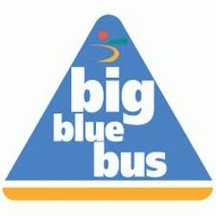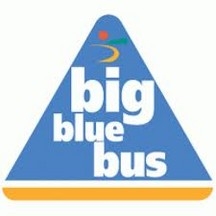
CITYWIDE — As of this week, Santa Monica is free to put digital signs on the sides of Big Blue Buses, which officials estimate will bring in $4 million in ad revenue.
The signs are part of a pilot project crafted by Assemblywoman Julia Brownley (D-Santa Monica) in Assembly Bill 607, which was signed into law by Gov. Jerry Brown Monday.
It will allow BBB officials to put digital signs on 30 buses in the fleet for the three-year duration of the project.
Those signs display lit advertisements that can rotate every 2.7 seconds, and include text moving across the screen in the same amount of time.
The ability to switch out advertisements every few seconds would bring in $4 million in revenue, a sum that would help the company keep fares low, said Dan Dawson, BBB spokesperson.
“Transit has always been in a very difficult situation, but more so with the current state of the economy,” Dawson said. “We’re trying to think out of the box to find new and innovative revenue sources.”
Those sources keep costs down and bus lines open, he said.
However, such signs have never been allowed in California before, and the decision to put them on buses has opponents seeing red.
On Aug. 25, Los Angeles City Attorney Carmen Trutanich sent Brownley a strongly-worded letter of opposition to the program, which he held would negatively impact residents of Los Angeles.
“We have serious concerns about the public’s safety in the face of large, rapidly changing or streaming signs moving at speed on city streets,” Trutanich wrote. “We also have unanswered questions about the potential environmental impacts of these signs and whether they will be studied and mitigated in full by the city of Santa Monica.”
Big Blue buses spend more time within Los Angeles’ borders than in Santa Monica, and Angelenos will be more heavily impacted by the signs than residents of Santa Monica, he said.
To that end, Los Angeles officials requested a partnership with Santa Monica City Hall so that they would have some control over the signs after they crossed into Los Angeles.
So far, that hasn’t happened.
City Hall is in communication with the City Attorney’s Office in Los Angeles to work out a solution, said Kate Vernez, the deputy city manager for special projects.
“We’re confident that any concerns they have, we can address and work out,” Vernez said. “We do not have any news about what form that might take, because we’re still working with them.”
First, they need to find out what Los Angeles officials’ concerns are, Vernez said.
The Los Angeles City Attorney’s Office did not return calls for comment for this article. In the past, and in the letter sent by Trutanich, safety was listed as the primary issue.
Digital signage on buses has worked in both New York and Chicago, but no studies have been done to test whether or not the signs distract drivers.
Trutanich referred to it as a “dangerous” expansion of the vehicle code, which previously only allowed bus route identifications to be lit.
These signs are a far cry from the bright, flashing digital billboards that many Los Angeles residents are familiar with, Dawson said.
The signs detect light, and adjust how bright they are based on the light around them. That means that when it’s cloudy, the signs will automatically dim so as to avoid being a distraction.
Furthermore, operators can limit how bright the lights shine, Dawson said.
Although the pilot program allows for signage on each side of the bus, the digital signs will only face the sidewalks in order to prevent driver distraction.
They also only plan on outfitting 25 buses with the signs, although AB 607 gives them the authority to go up to 30.
The signs will not be appearing on buses for at least a year.
BBB officials will have to put the project out to bid and select the signs. Then, they will show the equipment to the communities that will be most impacted.
“There’s a lot of misconceptions about what these signs look like, how bright they are and what they do,” Dawson said.
ashley@www.smdp.com









